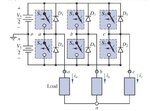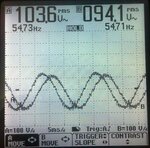moazam_s
Newbie level 4

- Joined
- May 1, 2014
- Messages
- 5
- Helped
- 0
- Reputation
- 0
- Reaction score
- 0
- Trophy points
- 1
- Activity points
- 60
I have designed a three phase pure sine wave inverter with spwm unipolar scheme. I am using a three phase rectifier to supply 200 Vdc on the dc bus of the inverter. Upon connecting a low pass LC filter i am able to get a 100Vrms pure sine wave across all three phase and the inverter is working fine on 100W load per phase. All the Mosfets in this configuration are not heating at all.
The problem arises when i want to step up these 100Vrms to 380Vrms using a three phase step up Transformer (Y-Y). Upon doing so the high side Mosfet of the third phase is heating up rapidly and getting burned down.
I would appreciate if anyone on this forum can help me out with the problem i am facing cause i am unable to sort the root cause of the problem yet.
The problem arises when i want to step up these 100Vrms to 380Vrms using a three phase step up Transformer (Y-Y). Upon doing so the high side Mosfet of the third phase is heating up rapidly and getting burned down.
I would appreciate if anyone on this forum can help me out with the problem i am facing cause i am unable to sort the root cause of the problem yet.






